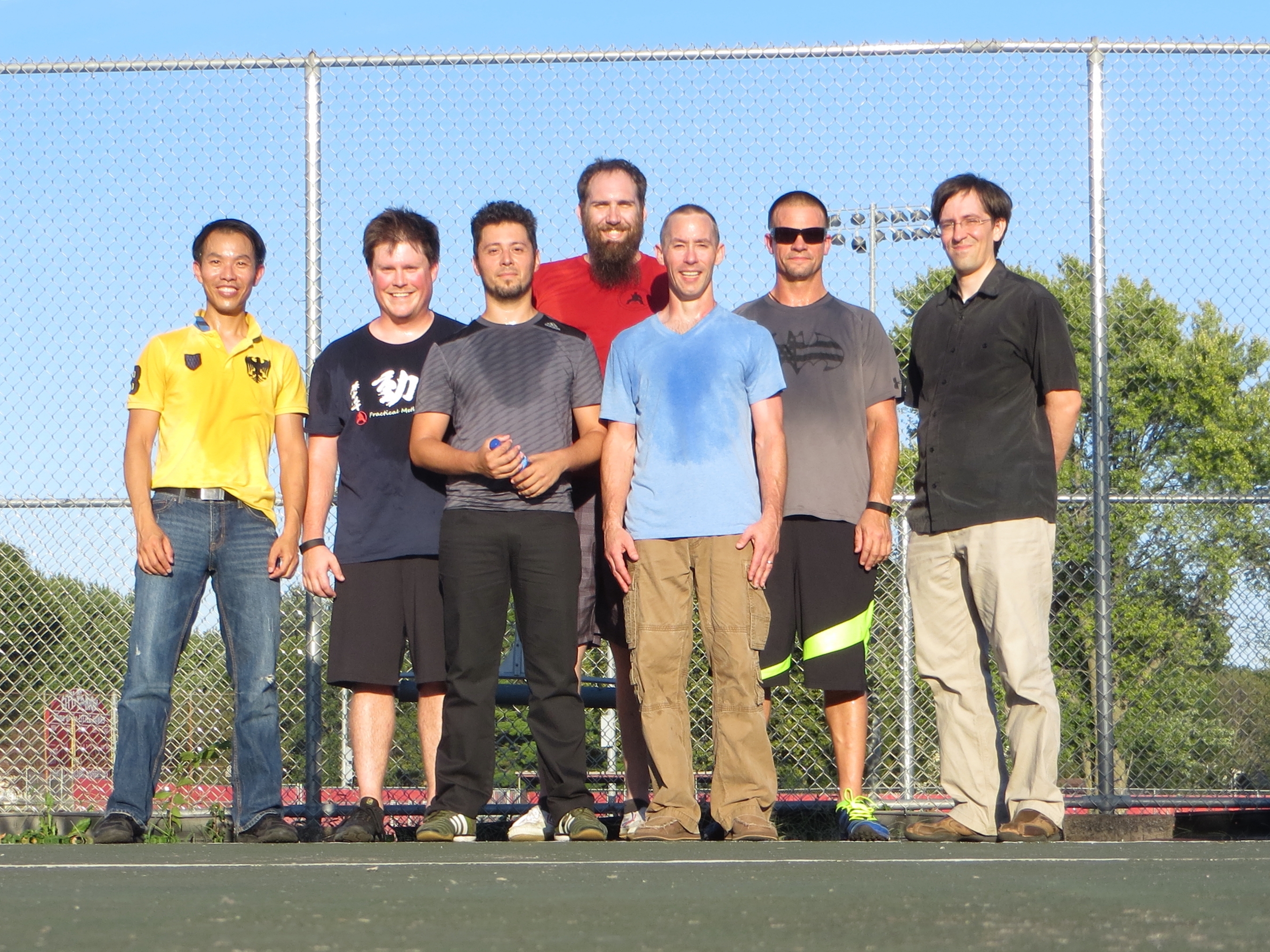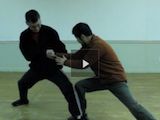I attended the Practical Method Iowa Workshop 2015. Officially, the workshop was on Sep 12-13, 2015. I spent a total of 6 days there from Sep 10-15, 2015. It was the best workshop I had ever attended. We had a lot of dedicated Practical Method people there. Thanks to Levi and Christina who let a number of us stay at their place the whole time, and gave us the opportunity to immerse in taiji with Master Chen Zhonghua. Thanks to Levi and John for taking care and arranging food, as well as driving us around. We woke up early at 4:20 am to start doing yilus before breakfast, and we often pushed hands till 10:30 pm at night. It was just wonderful being around my taiji brothers.
The following are the notes I took:
Day 1
– Keeping the back straight at all times
– Always have an aim at the centre, every movement should result back to the centre (don’t deviate from it)
– Keep the movement small, otherwise it is wasteful, and there won’t be any left.
-Separation: When the hands have power, move in the waist. Have power in the waist, the hands can become free. Nudge in bit by bit.
Day 2
– Yilu: My energy is still on the upper body, need to focus on moving the waist first all the time in every movement.
– Train the muscle to move around the bone, like Chen Xin’s diagram.
– Our movement needs to be like two hands holding a water bottle, and pushing the water bottle forward without dropping the water bottle.
Day 3
– Master Chen taught Cannon Fist’s choreography
– Footwork for “The whip wrapping around the body” in Cannon Fist: Walk across sideways as far as you can without jumping up
– In push hands, all movements are always expanding with no retreat and what was gained must be maintained.
– Double positive circles: Maintain the centre line straight and independent of the arm movements.
– Unless you train in practical method, you can’t see the difference in the rotation based on front shoulder-kua axis, centre axis and rear-shoulder axis.
– Synopation: separation of top (hands), middle (waist) and bottom (legs).
– Jady Girl’s Jump: Going up, link left thigh to right forearm. Going down, link right thigh to right forearm.
Day 4
– Timing is what we need to utilize. The concept is in the Chen cake exercise. We need 3 different and independent rhythms in the actions. We need to surprise the opponent with unexpected rhythm. For example, the one part of the body (elbow) travels a greater distance than another part of the body (fist). It means they have different rhythms.
– We need to complete the same rotation with different parts of the body in a sequence. One part action is likely not enough to complete the rotation that I need. I need to do the first action (left elbow down with a hand hook on the opponents shoulder), when that action is maxed out, maintain where it ends, continue with the 2nd action that contributes to the same rotation (right hand that stretches out around opponent), when the 2nd action reaches its maximum, continue with the 3rd action that contributes to the same action (left kua rotating down).
– Example: No retreat. Think of a cylinder. Use the right side of the cylinder as the fixed axis, rotate the cylinder, then use the bottom of the cylinder as the fixed axis. This is also the same as the “worm” action.
– Drill for Left Fist Cannon and Right Fist Cannon
– Use a fake move to hide the real move. These 2 moves have to happen simultaneously so the opponent can’t detect it, e.g. pretend to push hard but not moving on the top, the bottom moves in at the same time, so the bottom advances.
– Find time to go to Daqingshan for 2 weeks to train.
Day 5
– We need to train the vertical axis of rotation as the power engine. Pick a move in cannon fist and drill it, e.g. Turn right and shoulder strike.
– Every move in cannon fist requires a central axis, use Tame the tiger to train it.
Aaron Bartholomew’s notes are also available: http://practicalmethod.com/2015/09/iowa-workshop-2015-photos-and-notes/




{ 5 comments… read them below or add one }
Thanks Kelvin they are great!
Thank you Kelvin for the useful notes. I believe I understand most of what you wrote, however there is one that I hope you can expand a bit more on:
“- Example: No retreat. Think of a cylinder. Use the right side of the cylinder as the fixed axis, rotate the cylinder, then use the bottom of the cylinder as the fixed axis. This is also the same the “worm” action.”
The “use the bottom of the cylinder as the fixed axis” and “This is also the same (as) the “worm” action” is something that I would like to understand.
Here is another way to say it: Your two hands are holding the two ends of a short stick. 1) Fix the left hand, move the right hand holding the other end of the stick around the fixed left hand. 2) Now fix the right hand, move the left hand hold the other end of the stick around the fixed right hand. 3) Repeat step 1.
By alternating such actions, you get the worm action. Now imagine this short stick is the diameter of a cylinder, and the alternating actions are done by rolling the cylinder over the fixed line on the side of the cylinder.
OK. Slow sailing. The worm finally got it. The inch worm indeed. Thanks. 🙂
Thanks for sharing your notes, Kelvin. They’re a valuable asset to my practice, even if I don’t fully understand all the content